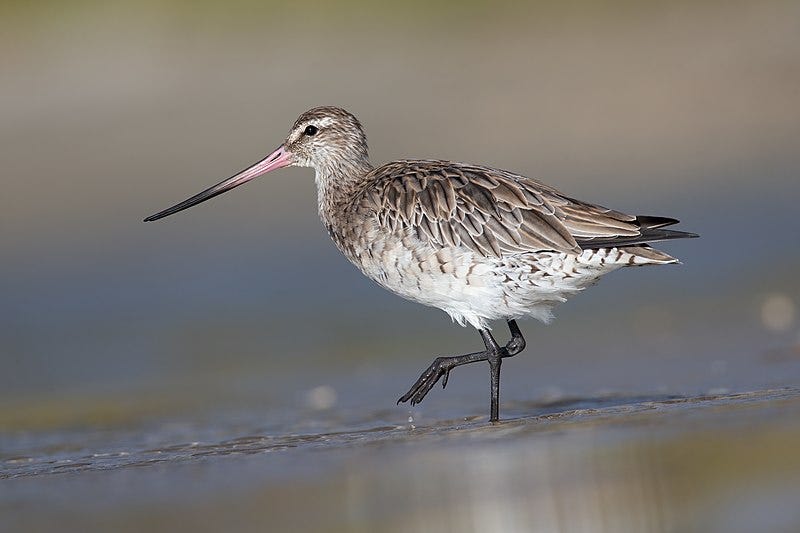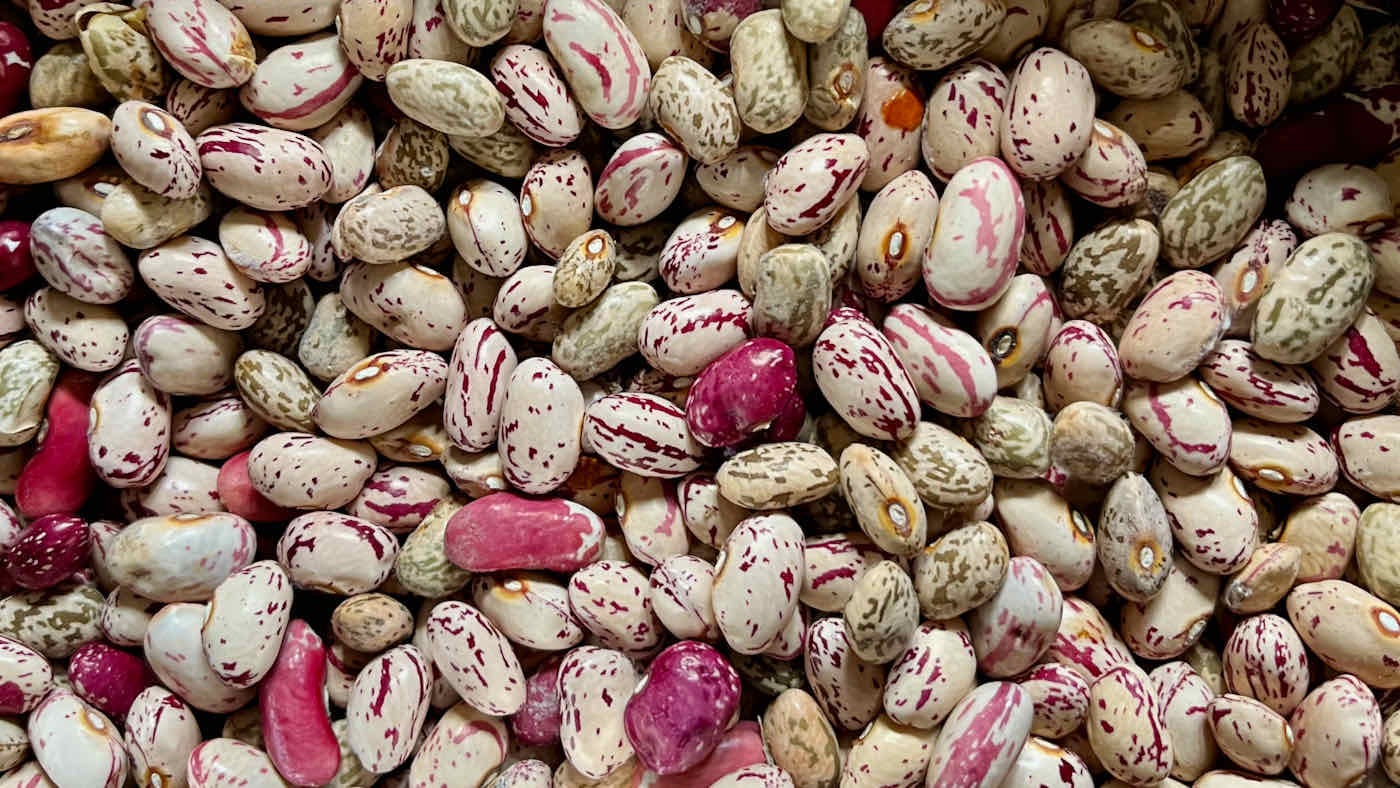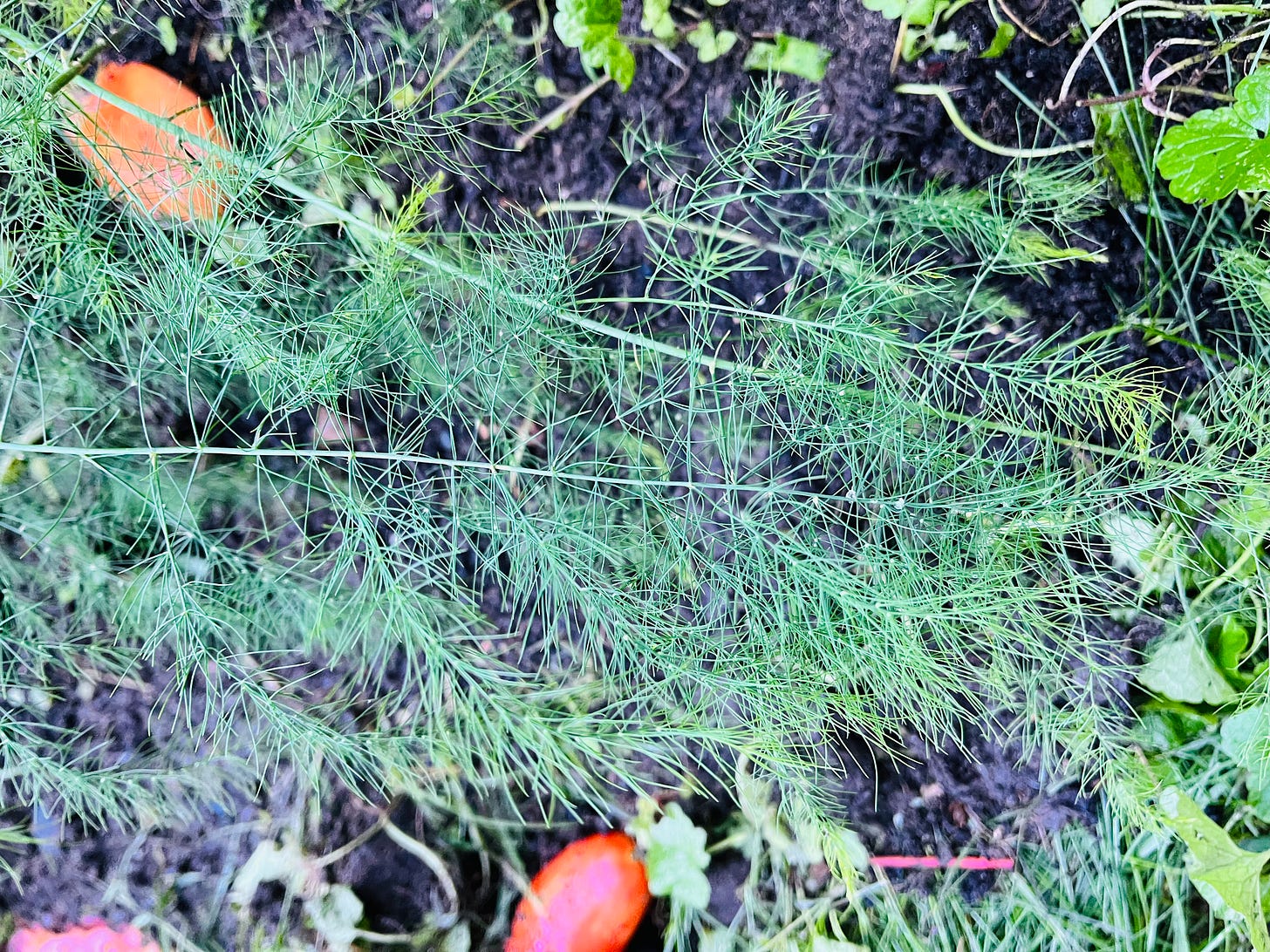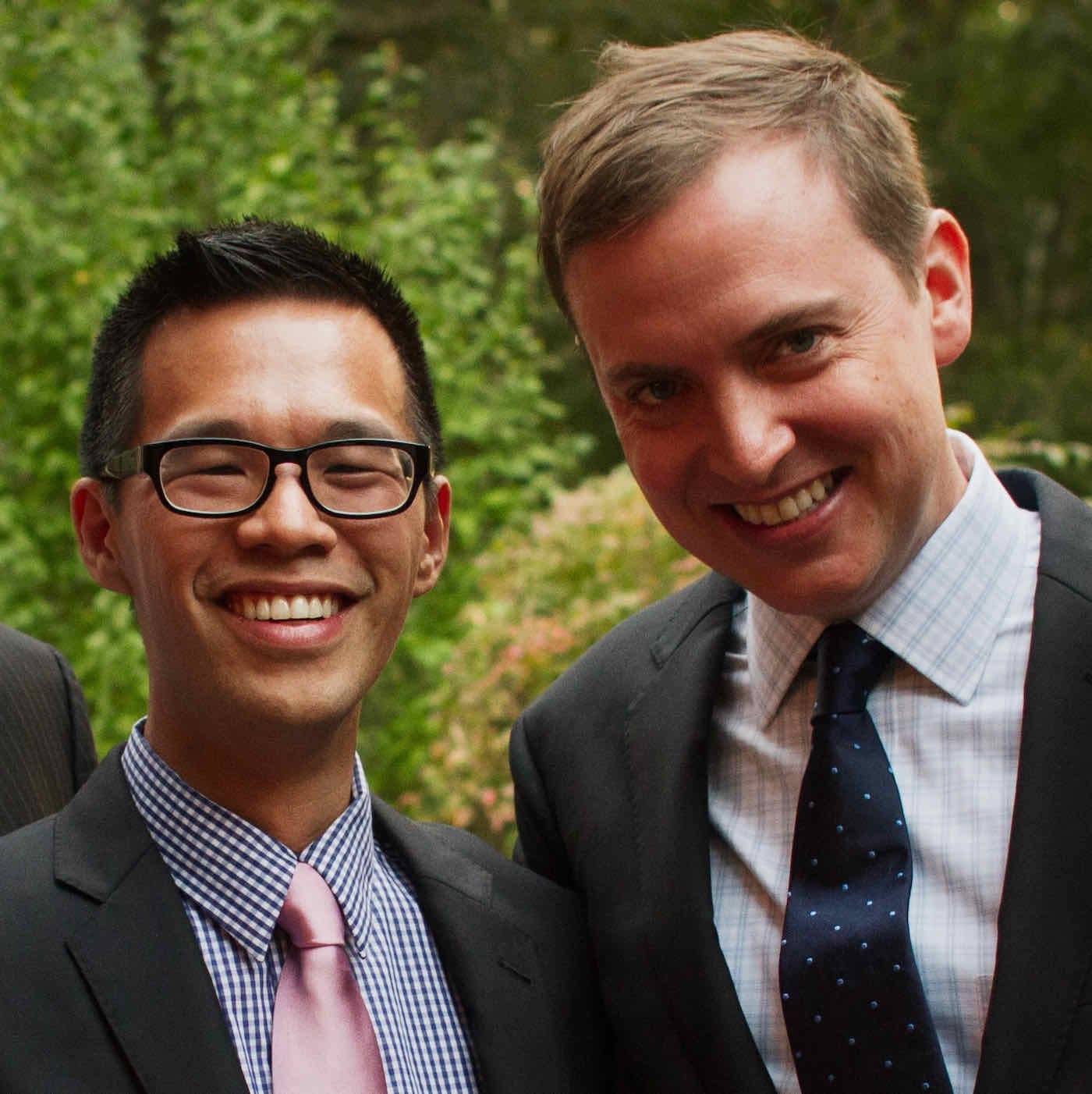First Comes the Feast
Some fragmented thoughts on readying for winter, the long journey of the bar-tailed godwit, asparagus, and a remarkable photographer
Wednesday, September 21
Grand Rapids, Mich.
Happy autumn, at least to you friendly readers in the Northern Hemisphere.
Aside from a few late-ripening stragglers, the plum tomatoes from our yard have all been turned into sauce and canned. Potatoes are curing in the basement. And I’m slowly, slowly, slowly working my way through the dried beans that I harvested. Some will be set aside for planting next spring; the rest will be for meals this winter. That’s assuming, of course, I ever finish shelling these beans: There has got to be some machine that industrial farming operations use to do this, because there’s no way that beans should be as cheap as they are in the grocery store if it takes this much labor.
The seed garlic as well as the tulip and daffodil bulbs that I ordered will soon arrive. In the coming weeks, I will tuck those cloves and bulbs into the ground and wait for them to do what they were made to do. A few blueberry bushes are en route too; they’re destined for a sunny spot next to our driveway.
Isn’t it strange how we often refer to spring and summer as “growing season”? It’s as if the only growth that matters is what we can see and taste and harvest. For so many plants, though, the colder months are when they focus their efforts below ground, sending energy downward to establish or expand the root systems that help to sustain them the rest of the year. Though we call such seasons times of “dormancy” or “quiescence,” I’m not sure that’s right.
A few minutes ago, I looked out my study window and glimpsed one flash of orange amidst the still-green leaves of the maple tree in front of our house. One tiny, precocious limb, ready for fall. The chlorophyll that turns those leaves green in the summertime is fading away, and we’re now beginning to see are the anthocyanins—pigments that come to life in autumn’s cool, powered by the glucose stored in the leaves. Beyond our perception, the tree is readying itself for winter, banking the nutrients that, come springtime, will fuel a new burst of visible growth. But if we go back to the very beginning, don’t the roots come first, before the shoots?
Different work in different seasons, steady preparation for what’s to come: I want to learn from that.
Yesterday, I also read and then re-read a New York Times story about a bird I’d never heard of called the bar-tailed godwit. (The etymology of this delicious name is not entirely clear, but it might have to do with the bird’s call and it might be rooted in the Old English words for “good creature.”) The godwit flies 7,000 miles nonstop, over the course of eight to ten days, to get from its summer home in Alaska to its wintering grounds in New Zealand and Australia. The return journey is even longer; it makes a detour to some tidal flats off the northeastern coast of China, where food abounds. Unlike some species, the godwit doesn’t soar; it actually flaps its wings all the way there and back.

There’s still much that remains mysterious about the godwit, even to the scientists who have been studying these birds for years. But they have learned something about its seasons of preparation, and that’s what intrigues me most. In the weeks before it begins its remarkable flight, it gets ready for what’s coming. With its long bill, the godwit snatches marine worms and shore crab from the shallows, feasting and doubling its body weight and loading up on fat—fuel for the journey. Its body also morphs in other ways. “The gizzards, kidneys, livers and guts shrink to lighten the load for the trans-Pacific journey,” the article says. “Pectoral muscles grow before takeoff to support the constant flapping the trip requires.”
I tend to think of feasting as a reward, napping as a luxury, rest as the thing that comes after the hard work has been done. But maybe I have it wrong. What if I’ve got it precisely backward? If I trust the godwit to be my teacher, it would seem that recognizing the goodness comes first, so that I can feed on the gratitude amidst the hard journey ahead. And if there’s a lesson from the tulip and the maple, nurturing the roots now will provide the groundedness and sustenance that I need later.
It seems so countercultural. This world constantly demands that we show ourselves, that we face outward and post consistently, signal our virtue and say the right thing, show up and do more and more. And so many of us do just that, until we’re weary of it—and then we tap out. In so many ways, we’re obsessed with the showy flowering and much less attentive to all that ought to happen before, often invisibly, to make this life sustainable. Perhaps the other creatures embody wisdom greater than we give them credit for. Perhaps the garlic and the daffodil, the maple and the godwit, have some inherent understanding that I don’t. Perhaps I have a lot to learn from them.
What I’m Growing: I suppose it says something about my settledness here that the blueberry bushes are on their way. About six weeks ago, I also bought some asparagus crowns from a farmer at the market. He urged me to plant them quickly, so that the roots would have time to establish themselves before the onset of winter. Pretty soon, we began to see some wispy growth. Look at these lovely, feathery leaves! The asparagus demands patience: We probably won’t be able to harvest any springtime stalks for a couple of years. I think it will be worth the wait.
A brief tribute: The photographer Roxanne Lowit died last week at the age of 80. She was a giant of fashion photography. But her specialty wasn’t the glamour shot, the runway photo, or the airbrushed portrait. Instead, she won fame for candids. Lurking behind the curtain at fashion shows and parties, she captured behind-the-scenes photographs that gave the world a glimpse of the humanity of folks such as Kate Moss, Yves Saint Laurent, and Naomi Campbell.
I first met Roxanne in 2012 in London. Fast Company had assigned her to shoot a portrait of architect Zaha Hadid and designer Rem Koolhaas, who were collaborating on an avant-garde shoe. I was the writer on the story.
Roxanne and I arrived at the shoot location at the appointed time. We were supposed to have an hour, half for photo, half for interview. But Hadid kept us waiting and waiting and waiting—for more than three hours. When she finally swept into the room, imperious and haughty as ever, she announced, “I have only ten minutes.” Roxanne got it all.
I wasn’t mad. To watch Roxanne work was wondrous. She seemed quiet, even sometimes scatterbrained. Yet all the while, she was observing and perceiving and framing, gathering information to construct her compelling images.
We stayed in touch after that assignment. Occasionally, we’d meet for lunch or dinner. Then, before Does Jesus Really Love Me? was released, I needed author photos, so I asked Roxanne. Of course she said yes, and of course she wouldn’t let me pay her. I was anxious about the shoot, which took place at her studio in Manhattan. But she put me at ease, just chatting and chuckling at my awkwardness. A year or so after that, she asked for help with text for her monograph on Yves Saint Laurent as well as for her website; she had images, and I had words, so it was an honor and a pleasure.
Roxanne’s photographs work as brilliantly as they do because she always saw past the facade. She knew when to step forward and when to stay back. She cultivated her subject’s comfort, chipping away at pretense or self-consciousness with her kindness, grace, and curiosity. In a world that can be so self-absorbed, she chose constantly to look beyond herself, to observe the whirl and the hum around her, and to find the beauty everywhere.
Rest in peace, Roxanne, and may your memory as well as your photography continue to be a blessing, just as they were during your lifetime.
What you do to deepen your own rootedness? How do you invest in the support structures that nourish your humanity? What have you learned about what you need to keep yourself steady? I’d love to know.
I’m writing you a day early, because tomorrow is our 10th wedding anniversary. What a decade it has been. When Tristan and I married, I was a full-time magazine editor in New York City, and I had never published a book, never preached a sermon, never grown anything from seed in any garden. Over the years, Tristan has taught me so much about compassion, about steadiness, about faithful equanimity. I love the home and the life that we’ve built together. And I love him.
We’re heading out of town for a few days to celebrate, and for the first time in recent memory, I’m not taking my laptop. I have one small reporting assignment to do while I’m away. But for the most part, I’m going to work my hardest during this brief vacation... to rest.
I’m so glad we can stumble through all this together, and I’ll try to write again soon.
All the best,
Jeff
p.s. A word of gratitude to you who have become paid subscribers to Notes of a Make-Believe Farmer over the past month. You help make this work sustainable. I am more thankful for that backing than you could know. As I’ve said before, I intend for this newsletter to remain free to all readers. Your support helps make it possible to do so.








Happy anniversary!! I hope you and Tristan have a wonderful time to celebrate and remember and rejoice and rest :)
The seed is in the ground.
Now may we rest in hope
While darkness does its work
Wendell Berry
Thanks, Jeff, for your good words and the way they help me to be present to small and beautiful things…really good cheese, for instance, or the smell of bread baking…hearing my 20 month old granddaughter string words together as she learns the world she belongs to. She helps me to find it wondrous.
Blessings to you and Tristan on your 10th anniversary!